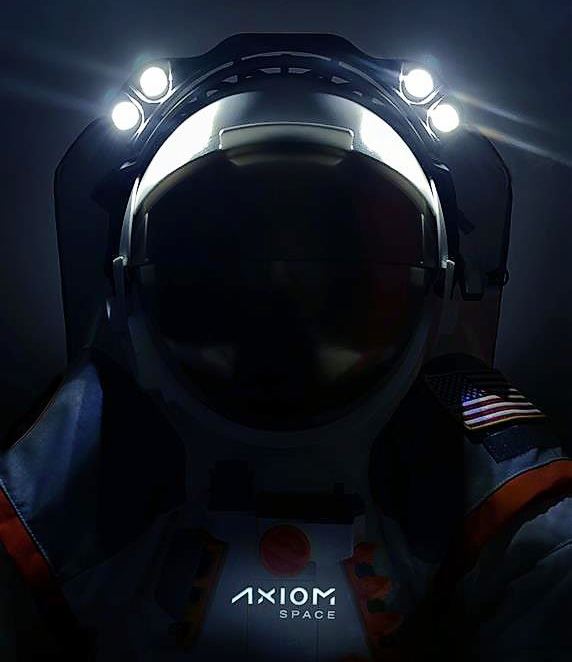NASA has struck deals with two commercial teams to provide the spacesuits destined for use when astronauts return to the moon by as early as 2025 — and there’s an extra twist that might have sounded alien to the Apollo moonwalkers more than a half-century ago. This time, NASA won’t own the suits.
Under the terms of the contracts issued for Exploration Extravehicular Activity Services, or xEVAS, Collins Aerospace and Axiom Space will own the spacesuits. They’ll also be free to explore non-NASA commercial applications for the data and the technologies they develop in partnership with NASA.
NASA will purchase services from Collins and Axiom to fill the space agency’s spacewalking (and moonwalking) needs through 2034. The contracts have a combined maximum potential value of $3.5 billion, with the actual payout for each company determined by how NASA divvies up its task orders.
The model builds upon the precedents set by NASA’s commercialization of crew transport and cargo delivery services for the space station. A similar model was followed last year when NASA awarded a $2.9 billion contract to SpaceX for the Artemis program’s lunar lander.
“With these awards, NASA and our partners will develop advanced, reliable spacesuits that allow humans to explore the cosmos unlike ever before,” Vanessa Wyche, director of NASA’s Johnson Space Center in Houston, said today in a news release. “By partnering with industry, we are efficiently advancing the necessary technology to keep Americans on a path of successful discovery on the International Space Station and as we set our sights on exploring the lunar surface.”
A wide range of companies — including Elon Musk’s SpaceX and Jeff Bezos’ Blue Origin — registered their interest in being a part of NASA’s spacesuit program, which has gone through a series of developmental delays. The teams that won out reflect significantly different backgrounds.
Axiom Space wasn’t even a glimmer in NASA’s eye back in the Apollo era. The Texas-based company was founded just six years ago, but it’s become a serious player in the commercial space race. It sent three customers on a trip to the International Space Station in April, and it’s building a habitation module that’s due to be attached to the space station in the 2024 time frame.
For the spacesuit project, Axiom partnered up with aerospace stalwarts including KBR, Air-Lock, the David Clark Company, Paragon Space Development Corp., Sophic Synergistics and A-P-T Research. “Our innovative approach to xEVAS spacesuits provides NASA with an evolvable design that enables cost-efficient development, testing, training, deployment and real-time operations to address a variety of EVA needs and operational scenarios for a range of customers, including NASA,” Michael Suffredini, Axiom Space’s president and CEO, said today in a news release.
 Axiom Space teases its spacesuit design. (Axiom Illustration)
Axiom Space teases its spacesuit design. (Axiom Illustration)
The other xEVAS team has a long history in the spacesuit business. Collins Aerospace can trace its lineage back to Hamilton Standard, manufacturer of the Apollo spacesuit’s life support system.
“Collins was there when the first man walked on the moon, and we’ll be there when humankind goes back,” said Phil Jasper, the company’s president of mission systems, said in a news release.
Collins, an Iowa-based subsidiary of Raytheon Technologies, has another illustrious spacesuit maker as its teammate. Delaware-based ILC Dover has been building pressurized spacesuits for NASA since the dawn of the Apollo era.
“We are excited to return to the moon and build on our 50-year legacy of supplying EVA suits to NASA from the Apollo program to today on the International Space Station,” said Patty Stoll, ILC Dover’s president of space systems. “We look forward to partnering with NASA as their lunar spacesuit provider and inspiring the next generation through Artemis as we work to send the first woman and next man to the moon.”
Another partner on the Collins Aerospace team is Oceaneering International, which won a $148 million contract from NASA in 2009 to work on a next-generation spacesuit. The contract was canceled before Oceaneering produced the suit, but not before NASA spent more than $80 million.
NASA has had its share of spacesuit troubles in recent years. In 2019, for example, the space agency had to change its plans for an all-female spacewalk because the right-sized spacesuit wasn’t available.
Last month, NASA suspended all but the most urgent spacewalks at the space station due to concerns about water leaks inside its spacesuits. One such water leak put a spacewalker’s life at risk in 2013.
Dan Burbank, a former NASA astronaut who’s now a senior technical fellow at Collins Aerospace, said future spacesuits will take advantage of all the technological advances that have occurred in the decades since the spacesuits currently used for spacewalks were designed.
“The next-gen spacesuit is lighter, more modular, a better fit and easily adaptable, which means that wherever the journey into space may lead, our crew will be ready,” Burbank said.
Lead image: An artist’s conception shows a moonwalker wearing a spacesuit provided by the Collins Aerospace team. Source: Collins Aerospace.

